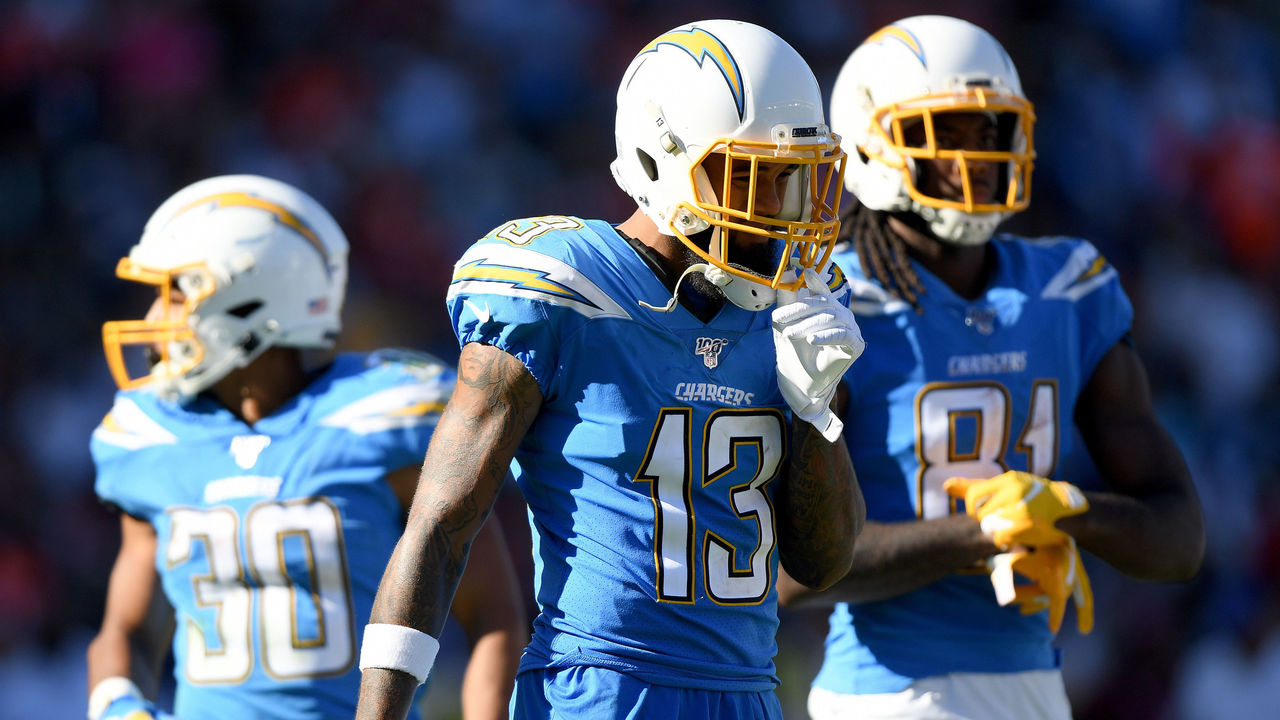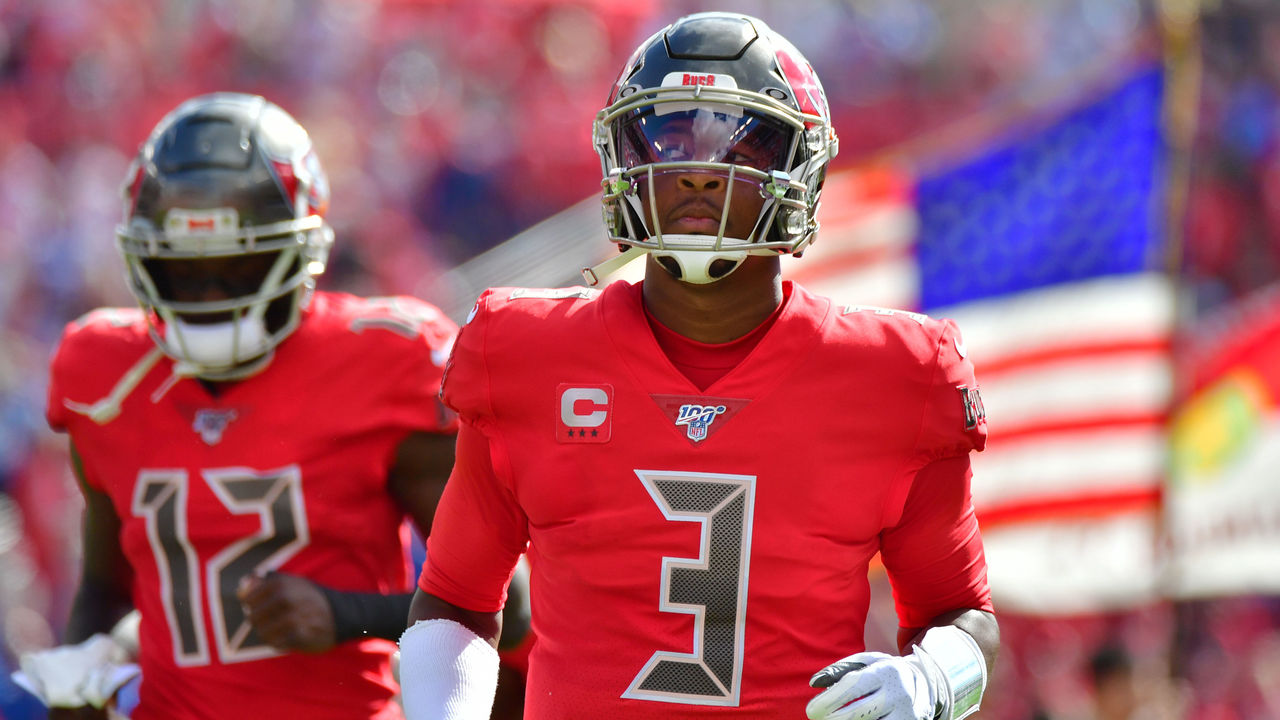Fantasy: 30 biggest fallers after free agency
After a busy week of trades and free-agent signings, the focus now is on players who joined new teams and how those changes will impact their fantasy values.
The first, second, and third waves of free agency have already been covered:
- Hooper to Browns, WR trades, franchise tags
- Brady, Rivers, Bridgewater find new homes
- Gurley to Falcons, Gordon to Broncos
Those moves resulted in plenty of fantasy updates:
And a breakdown of fantasy risers based on the moves:
So now let's look at the biggest fallers, including players who may not have been free agents, but still saw their fantasy stock drop significantly this past week.
Kirk Cousins, Vikings - The Vikings' shift to a run-heavy offense should have been enough to make you wary of Cousins as a fantasy asset prior to last season. His passing attempts decreased from 38 per game in his first campaign in Minnesota to just 30 per outing in 2019. We also saw his passing yards fall by 695 and touchdowns by four. With Stefon Diggs traded to Buffalo, there's no reason to roster Cousins and his limited fantasy ceiling.
John Brown, Bills - Diggs' arrival in Buffalo is bad news for Brown, who had a career year in his first season in Western New York with 72 receptions, 1,060 yards, and six scores. Brown was remarkably consistent with at least 50 yards in 13 of his 16 games, including the Bills' playoff loss. He also ranked among the top-15 wideouts in target shares - a number that's guaranteed to decline with Diggs around. It's enough to make Brown a fringe fantasy WR3 who will be far more volatile week to week.
Broncos' running backs - Running back might be more opportunity-driven than any position in football, and that's why Melvin Gordon landing in Denver is a problem. Phillip Lindsay rose to the top of the depth chart with back-to-back 1,000-yard seasons but now finds himself in an uncertain timeshare with Gordon. Even a slight reduction in volume, which appears imminent, would have major consequences for Lindsay's fantasy outlook. In yet another running back by committee, Gordon will need the bulk of the goal-line carries and passing-down work if he's to have any chance at earning a spot among the top-20 fantasy backs. Meanwhile, Royce Freeman will struggle for playing time and may ultimately be wearing a different jersey come Week 1.

Chargers' skill position players - Though Philip Rivers had been in decline over the last couple of seasons, he still had enough arm to make several members of the Chargers' offense fantasy viable. At the moment, the front office seems willing to move ahead with veteran Tyrod Taylor under center - a risk-averse thrower who will limit turnovers and grind out low-scoring victories where the Chargers' defense does most of the heavy lifting. If Taylor indeed starts, the target competition between Keenan Allen, Mike Williams, Hunter Henry, and Austin Ekeler is about to intensify, hurting each of their 2020 projections.
Jacoby Brissett, Colts - Brissett served as a solid replacement after Andrew Luck retired last summer, but he didn't show enough to be a long-term solution for Indy. Instead, he'll return to his role as a trustworthy backup, with Rivers being the bridge to the team's next starting quarterback, who will likely come through the draft.
Austin Hooper and David Njoku, Browns - Coming off a year spent in the dog house, Njoku was poised for a fresh start under new head coach Kevin Stefanski. Hooper signing in Cleveland makes that outcome highly unlikely. Last year in Minnesota, with Stefanski emphasizing the running game, the Vikings ranked 30th in pass attempts. The scheme often featured two-tight end sets, but with Odell Beckham Jr., Jarvis Landry, and a pair of quality backs in Nick Chubb and Kareem Hunt, there are a lot of hands vying for targets. Barring injuries, Hooper will see far less volume than he did in Atlanta, bumping him into the low-end TE1 range, while Njoku will be a touchdown-dependent player best left on the waiver wire.
Raheem Mostert, 49ers - This one may have flown under the radar as the 49ers placed a second-round tender on Matt Breida and kept Jerick McKinnon in the fold thanks to a restructured deal. That leaves San Francisco's backfield very packed heading into next season, with Mostert competing for touches with Breida, McKinnon, and Tevin Coleman. Even with his strong finish, Mostert only topped 13 touches three times in the second half of the season and was used sparingly as a pass-catcher. The upside for high-end fantasy production is there, just don't get too attached, since the lead back job tends to rotate in this offense.

Julian Edelman and James White, Patriots - White isn't actually consoling Edelman in the image above, but he might as well be now that Tom Brady's days in New England are over. No one benefitted more from Brady's savvy approach to the game than this duo, which accounted for 40% of the Patriots' targets in 2019. If the offense deteriorates without Brady, both Edelman and White will feel it in their volume, efficiency, and scoring opportunities. Until we know Bill Belichick's plan at quarterback, treat Edelman as a WR3, with White barely holding onto RB3 status.
Vance McDonald, Steelers - McDonald will turn 30 in the summer and has never been a consistent fantasy starter. Adding Eric Ebron to the depth chart won't help him break out anytime soon. With JuJu Smith-Schuster, Diontae Johnson, and James Washington at receiver, McDonald is, at best, Pittsburgh's fifth option. Even Ebron is a risky player to roster with an undefined role on his new club.
Tre'Quan Smith and Jared Cook, Saints - Though the Saints' passing attack is dominated by Michael Thomas and Alvin Kamara, there's room for another fantasy asset to emerge. We saw Cook record top-two tight end numbers after Drew Brees returned to the lineup in the second half of the season. Smith has been a fantasy sleeper for a while, and with Ted Ginn Jr. hitting free agency, there was hope the 24-year-old could finally carve out a bigger role. However, recently signed free agent Emmanuel Sanders will increase the degree of difficulty for both players to deliver in fantasy. Cook's red-zone presence should still keep him in the low-end TE1 ranks, but Smith is no longer worth consideration for your roster.
Cam Newton, free agent - After a pair of injury-shortened seasons, Newton has officially been released by the Panthers. The former MVP reportedly passed a physical this week, according to ESPN's Adam Schefter, so it should only be a matter of time before he signs with a new club. The issue for Newton is that there aren't many starting jobs left. From a fantasy perspective, let's hope the Chargers or Patriots are interested.

Jameis Winston, free agent - Winston appears to be garnering little interest on the open market, as teams are scared off by his league-leading 30 interceptions. It's stunning that a 26-year-old quarterback coming off a 5,000-yard season with 33 touchdown passes can't find a starting role, but Winston may have to settle for a backup job, similar to Ryan Tannehill and the Titans last year. Like we learned with Tannehill, fantasy owners shouldn't give up on Winston yet.
Darren Waller and Derek Carr, Raiders - It's possible Marcus Mariota, who joined Las Vegas in free agency, could be this year's version of Tannehill - a former first-round pick who failed with his original team, signed as a backup on a new roster, and ultimately usurped the starter. The leash will be a little shorter for Carr this season. At tight end, Waller doesn't need to be too worried after a breakout 90-catch, 1,145-yard, three-touchdown campaign, but Jason Witten is the kind of veteran who could siphon targets, especially around the red zone. Keep viewing Waller as a mid-range TE1, just keep an eye on Witten's involvement.
Mitchell Trubisky and Trey Burton, Bears - Chicago's front office had no choice but to bring in a quarterback who could, at worst, challenge Trubisky this season. Former Super Bowl MVP Nick Foles can do just that, offering the kind of stability Trubisky appears to lack. Don't be surprised if Foles is starting in Week 1. A veteran tight end doesn't come with the same intrigue, especially when it's Jimmy Graham, who hasn't been a fantasy factor since leaving the Seahawks in 2017. With eight tight ends now under contract in Chicago, this is a mess you don't want to get mixed up in.
Will Dissly, Seahawks - While Dissly has 50 yards and/or a touchdown in six of his 10 career starts, his inability to stay healthy the past two seasons led the Seahawks to bring in veteran Greg Olsen. Perhaps the organization is tipping its hand about Dissly's recovery by signing Olsen and tendering Jacob Hollister. For now, this is a group to stay away from entirely.

Curtis Samuel, Panthers - Teddy Bridgewater's tendency to take what the defense gives him in the short to intermediate area of the field might have been enough to land a speedster like Samuel on this list. With Carolina also adding Robby Anderson to its receiver room, Samuel's status as the team's No. 2 wideout is now in question. Anderson is a more proven NFL weapon who played under Panthers head coach Matt Rhule in college. When you include target share concerns in the equation, Samuel's stock is heading in the wrong direction.
Deshaun Watson and Duke Johnson, Texans - You can read about all of the winners and losers from the DeAndre Hopkins-David Johnson trade here. Watson, now without one of the league's best receivers at his side, will be forced to produce with a receiving corps made up of an injury-prone Will Fuller, an underachieving Kenny Stills, and a declining Randall Cobb. It's enough to drop him from a clear top-three fantasy QB into the middle of the QB1 pack. With a void on the outside, we might see Duke Johnson deployed more as a receiver instead of a pass-catching specialist out of the backfield. However, David Johnson excels in that area as well and will eat into his targets in 2020.
Christian Kirk and Andy Isabella, Cardinals - Hopkins commanded nearly a 30% target share in his final season with the Texans, and his presence in Arizona pushes everyone down the depth chart. Kirk's impressive target totals from 2019 will disappear as he settles into the No. 2 role, while Hopkins' presence reduces the need for Isabella to emerge as a big part of the Cardinals' offense. It's great news for Kyler Murray's development and the offense as a whole, but Hopkins' arrival in the desert puts a damper on the fantasy outlooks of the rest of Arizona's receiving room.
HEADLINES
- Burrow on future with Bengals: 'Crazy things happen'
- Nacua believes officials make calls to get on TV: 'Refs are the worst'
- Dolphins benching Tua, giving Ewers 1st start vs. Bengals
- New kickoff rules fundamentally changed late-game NFL strategies
- Chiefs' Kelce: Mahomes' injury, no playoffs felt 'like it wasn't real'